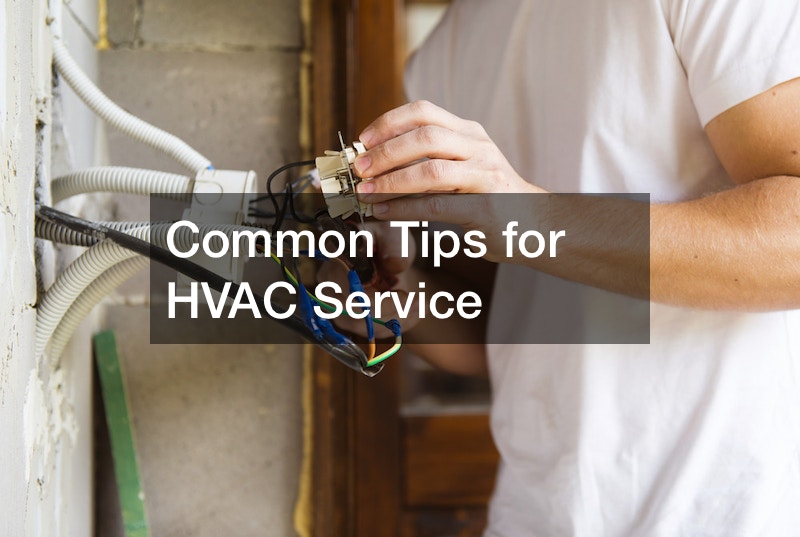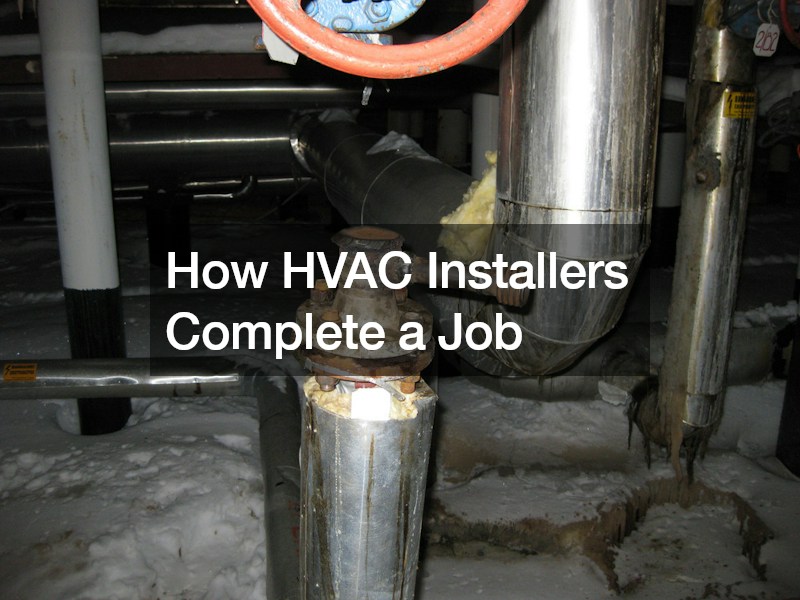Owning a home for the first time can be an exciting opportunity. However, it also comes with much responsibility, especially in maintaining your property. And of the top areas you shouldn’t overlook when taking care of your home is the heating and cooling system. If you’re a first-time homeowner, below are tips on creating the ultimate HVAC preventive maintenance template.
Set Up an HVAC Schedule

If you want to create a good HVAC preventive maintenance template, regular service calls are necessary. Regular maintenance can prevent many issues that can cause your system to break down, leading to costly repairs and replacement. On top of that, you can extend the lifespan of your HVAC unit, increase its efficiency, and ensure that your home has a reliable heating and cooling system all year round.
But how often should you have your HVAC system maintained? According to ExpertHomeReport, you should service each of your unit’s components at least once yearly. This means you should schedule at least one visit by a heating and air conditioning technician, during which your entire system will be maintained. Alternatively, you can plan two visits, one just before the summer for your air conditioning unit and the other before winter for your heating system.
Besides the annual visits, you also need to schedule other visits for minor maintenance tasks. For example, you need to make sure to clean your AC filters to keep the unit running efficiently. According to This Old House, you should schedule a filter change after every other three months. However, you might also require more frequent filter replacements during peak AC usage seasons or other factors such as pets and poor-quality filters.
Make Necessary Repairs Before Major Problems Occur
Major HVAC breakdowns can be expensive to fix. HomeGuide says you can spend as much as $1,500 on issues like a refrigerant leak or a faulty evaporator coil. And if you’re unlucky, you might even have to replace your entire HVAC system, which can cost up to $12,000. But, even if you’re lucky to avoid a breakdown, a faulty unit is likely to be very inefficient, thus, resulting in high utility bills.
Apart from the cost element, an HVAC breakdown can also be a huge inconvenience for your family. For example, it can make your home uncomfortable or unsafe during hot or cold days. It can also lead to poor indoor air quality.
The good news is that you can avoid major breakdowns by including prompt repairs in your HVAC preventive maintenance template. By calling an air conditioner repair, you can fix issues with your system before they become serious or affect other components, leading to more problems. This will help extend your HVAC unit’s lifespan and keep your home comfortable and safe. It will also ensure that your heating and cooling system is not burning a hole in your pocket.
Work with a Reliable Contractor

Your HVAC system is one of the most vital assets in your home. Therefore, you should avoid performing any DIY maintenance and repairs. Likewise, when creating an HVAC preventive maintenance template, you should only work with a qualified and reliable contractor.
There are several benefits to working with an HVAC contractor. The main one is that a professional can deliver quality craft when maintaining or repairing your system. This helps to ensure that it’s running smoothly and efficiently. As a result, you can improve and maintain your home’s comfort, safety, and energy efficiency.
Saving money is another top benefit of working with a professional. For example, when you hire an air conditioning service, the technician working on your unit can easily detect and fix various issues at their onset. This will help to prevent your HVAC system from becoming inefficient or breaking down, thus costing you a lot of money.
Lastly, using a professional HVAC contractor helps prevent costly mistakes. For example, you can easily damage your system when performing DIY repairs. Likewise, working with an unskilled or unlicensed technician can lead to poor workmanship that can cause extensive damage to your unit. Unfortunately, your warranty could also be voided in both cases, leaving you to cover the HVAC repair or replacement costs out of your pocket.
Invest in Duct Cleaning
According to the EPA, the average American spends 90% of their time indoors, during which they’re exposed to high levels of airborne contaminants. Therefore, indoor air quality is one of the essential items to consider when creating an HVAC preventive maintenance template. And one of the top ways you can improve your home’s air quality is by investing in duct cleaning services.
Air duct cleaning has many benefits, starting with removing dust, debris, mold, and other pollutants hiding in your ducts. These pollutants are often circulated throughout your home by the HVAC unit as it pumps air through the vents. Therefore, removing them is one of the top ways to improve your home’s air quality, making it safe.
Some contaminants that hide in air ducts can also compromise the attractiveness and comfort of your home. For example, paint fumes, tobacco smoke, and cooking fumes have an unpleasant odor that can be circulated throughout the house by your HVAC system. Additionally, dirty ducts can promote the growth of mold and bacteria, which can produce more foul smells. Therefore, cleaning your air ducts can eliminate these pungent odors, leaving your home smelling nice and clean.
Another problem with dirty air ducts is that they can affect the efficiency of your HVAC unit. Too much dirt and dust can clog your ducts, impeding the airflow. Consequently, this can lead to uneven heating and cooling of your home. And as a result, your HVAC unit will have to work much harder, leading to high energy bills. So, cleaning the air ducts is another way to improve your home’s energy efficiency.
Keep Up with Tree Care

Trees can be a great addition to your home, especially where curb appeal is concerned. However, they can also be a problem that creates several problems for the outdoor heating and cooling unit. As a result, tree care is another essential element to consider when creating an HVAC preventive maintenance template for your home.
Falling leaves are one of the top ways trees can affect your HVAC system. If the trees are close to the outdoor unit, the leaves can clog the compressor, the intake vents, and the exhaust pipes. Consequently, the system must work much harder to achieve adequate airflow, leading to high utility bills.
Trees can also cause extensive damage to your HVAC system. The components clogged by falling leaves can easily become damaged, requiring replacement. In addition, trees that are too close to the outdoor unit can cause physical damage through falling limbs, especially during a storm.
You should hire a local tree service to care for your trees and protect your HVAC system. For example, trimming overhanging branches will reduce the risk of your outdoor unit sustaining damage from falling leaves or limbs. You could also hire tree removal services to get rid of problematic trees that pose a threat to your HVAC system.
Consult an Arborist on Planting Trees
Trees are not all bad where your home’s HVAC system is concerned. They can offer many benefits that improve your home’s heating and cooling. Therefore, planting trees is another excellent idea to help you create the ultimate HVAC preventive maintenance template for your home.
One of the top ways trees can benefit your HVAC system is by providing shade to the outdoor unit on hot days. According to the Department of Energy, shading can help to increase your system’s efficiency by up to 10%, leading to a huge reduction in energy bills. Furthermore, shielding the outdoor HVAC unit could help to protect it from damage due to direct sunlight exposure.
Well-positioned trees around your property can passively cool or warm your home by shielding it from direct sun exposure or extreme wind drafts. This can help improve your home’s energy efficiency and lower energy costs. In addition, it can reduce the workload of your HVAC system, lower its maintenance costs, and increase its lifespan.
So, it’s a good idea to plant trees around your property, given their benefits on your HVAC’s running and maintenance costs. However, you should hire a local arborist for professional advice before planting. This way, they will help you choose the right trees to offer maximum shade and windshield to your property. In addition, they will help you to place the trees in an optimal position, where they can contribute positively to the heating and cooling of your home.
Don’t Neglect Your Furnace

For most people, HVAC maintenance is about keeping the air conditioning unit in perfect condition. However, the AC is just one half of an HVAC system; the furnace is the other half, and it’s responsible for keeping your home warm and comfortable in cool weather. Therefore, it’s another aspect to consider when planning an HVAC preventive maintenance template.
Like with the AC, your furnace needs regular maintenance. You should schedule a service visit once every year, especially before the cold season sets in. During the visit, your technician should perform vital tasks like cleaning the burners, chimney, and vents, changing the furnace filters, and checking for air leaks. Other essential maintenance tasks include inspecting the fans, heat exchanger, and CO detector, checking the thermostat, and keeping the outdoor heating unit clean.
On top of maintenance, you need to stay on top of repairs and fix your furnace as soon as you detect any issues. Prompt repairs will help to avoid major breakdowns that can be very expensive. And like with other HVAC components, you should hire a licensed furnace repair technician to work on your heating system. This will help avoid costly mistakes that damage or turn your furnace into a fire hazard.
Clear the Area Around Your AC Unit
According to Houzz, vegetation is one of the top ways to conceal the outdoor air conditioning unit, which is usually an ugly eyesore. Unfortunately, too much foliage and clutter can negatively impact your HVAC system, leading to several problems. Therefore, when creating an HVAC preventive maintenance template, you should also account for brush clearing the space around the outdoor AC unit.
One of the ways vegetation and clutter can affect your HVAC system is by interfering with the airflow from the condenser. This forces the AC to work much harder to cool your home, increasing energy bills. Consequently, it also leads to faster wear and tear, thus leading to more expensive maintenance and increasing the risk of breakdowns.
Apart from interfering with the airflow, the debris around your outdoor AC unit could also clog some of the HVAC’ components, causing serious damage. In addition, it can lead to pest infestation, which can damage your HVAC system by crawling into the intake vents or chewing through electrical components.
To avoid all these problems, you should ensure the area around your AC unit is clean. You can hire bush clearing services to remove overgrown vegetation, weeds, and overhanging tree branches. You can also build a structure around the unit, protecting it from pests, vegetation, and debris. However, you must ensure it’s well-ventilated, lest you have airflow issues.
Consult an Electrician Before Upgrading Your HVAC
Replacement can be another vital aspect of your home’s HVAC preventive maintenance template. Replacing your system might be necessary if it suffers catastrophic failure or damage, becomes outdated and inefficient, or is too small for your home. However, before installing your new system, there are several things to consider, such as the electrical needs.
A new HVAC unit will likely have more electrical needs, especially if you own an older home or have been using an outdated model. Therefore, attempting to run it on your electrical system can lead to extensive damage to your wiring, other appliances, or even the HVAC system itself. To avoid such a disaster, you should hire electrical services and renovate your home’s electrical system.
Apart from an electrical contractor, you should consult an HVAC technician before upgrading your system. They can then offer expert advice on the most suitable model for your home’s heating and cooling needs. Furthermore, an HVAC professional can help determine whether you’ll need new ducts, thermostats, and other HVAC components with the new system.
Nonetheless, replacing your HVAC system can offer you many benefits. First, it can significantly decrease the repairs and maintenance costs, saving you a lot of money. Secondly, according to Pennsylvania State University, newer units are more efficient, using between 20% and 50% less energy. This can translate into huge energy savings on your home’s heating and cooling costs.
An HVAC system is vital to the comfort and safety of your home. On top of that, it can be expensive to repair or replace one in case of a major breakdown. Therefore, you must invest heavily in protecting your heating and cooling system. Fortunately, with the above tips, you can create the ultimate HVAC preventive maintenance template that helps extend your system’s lifespan.



